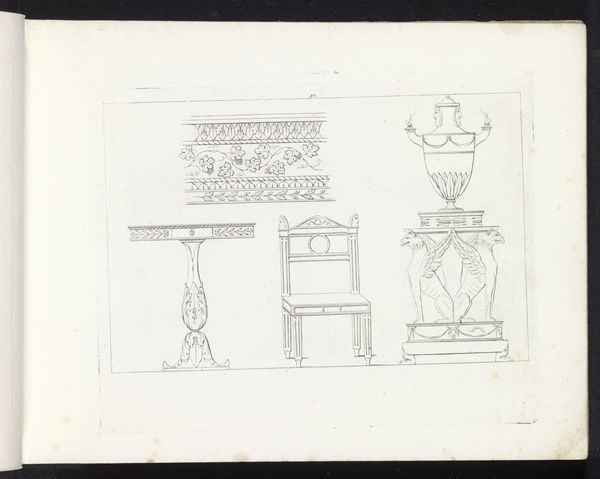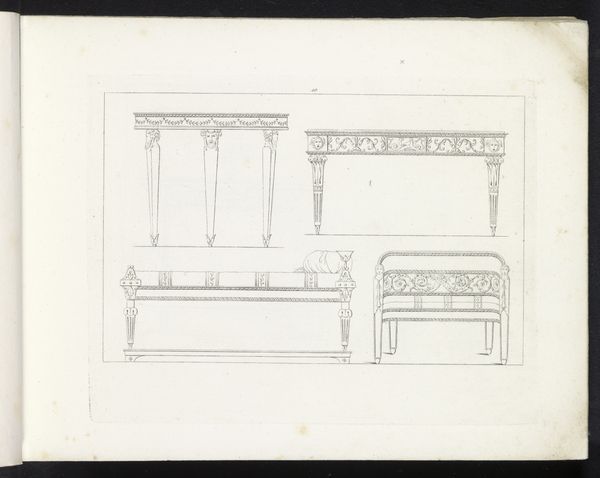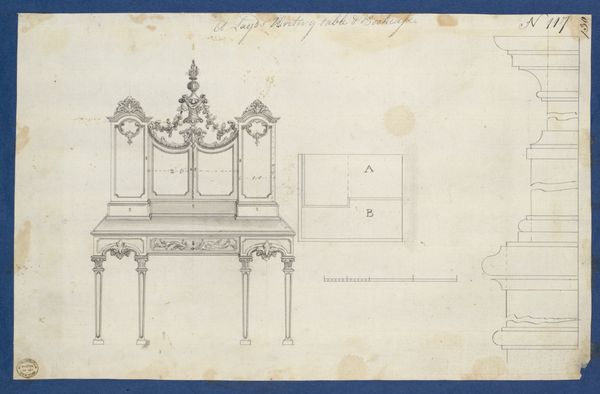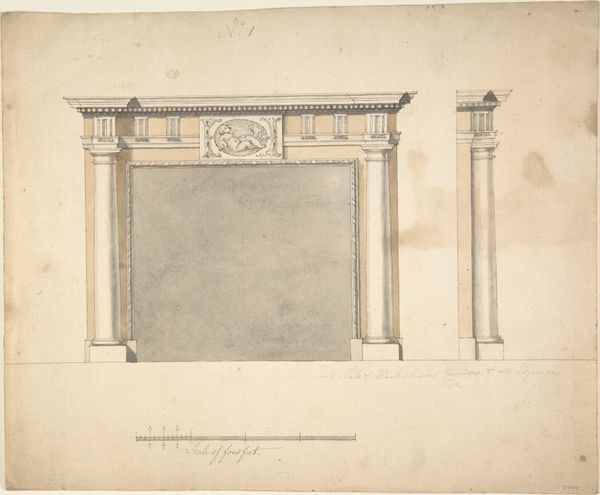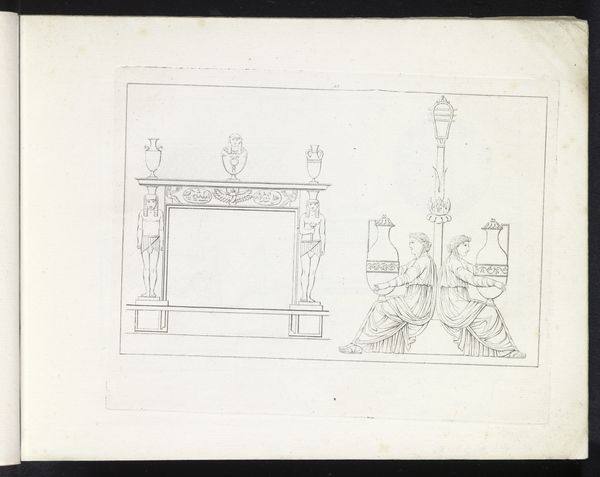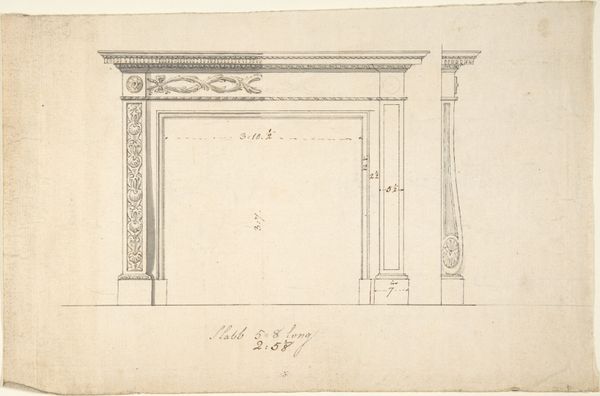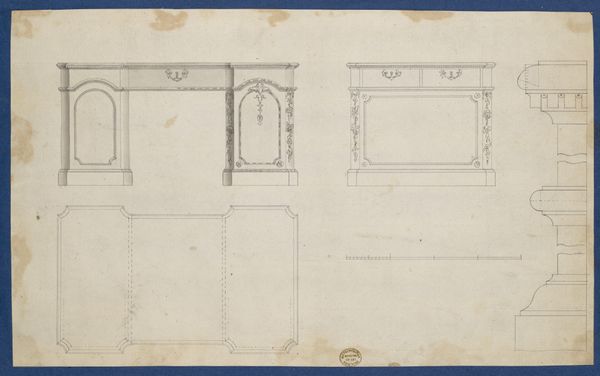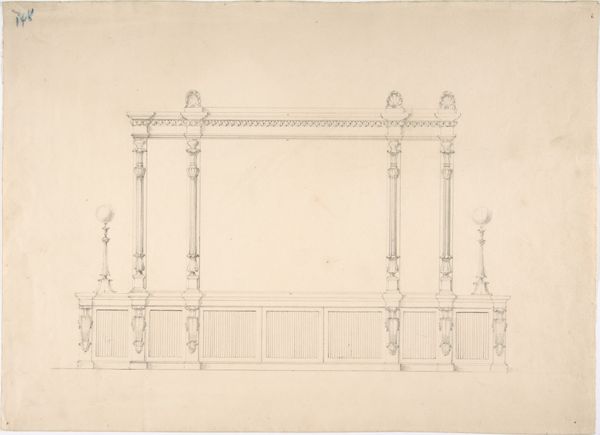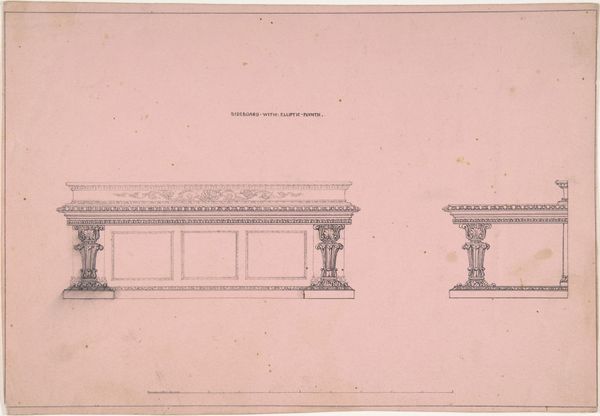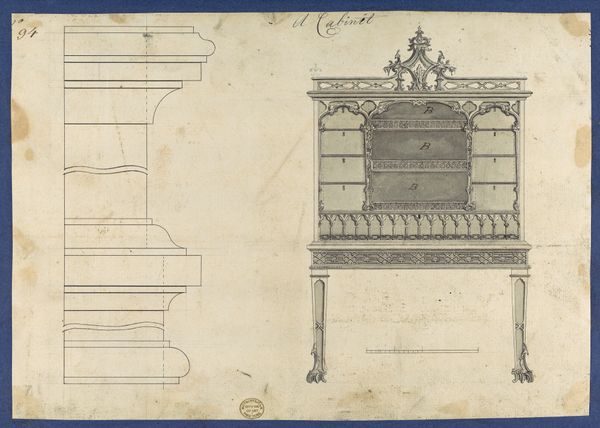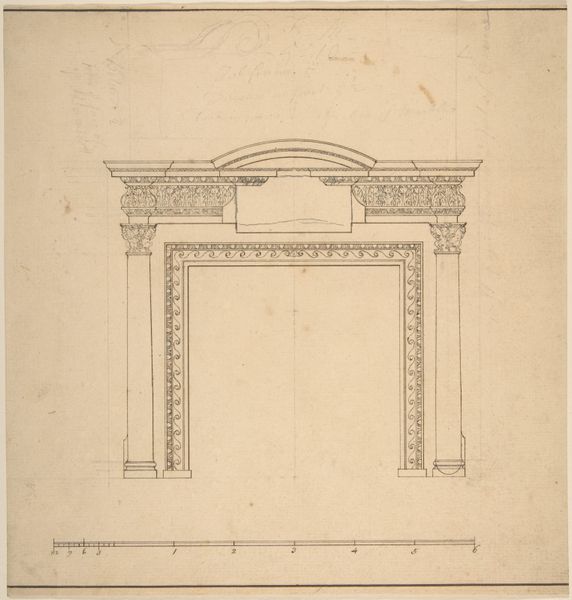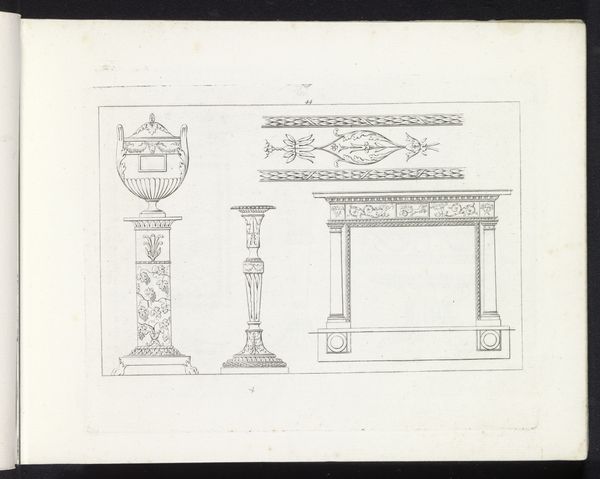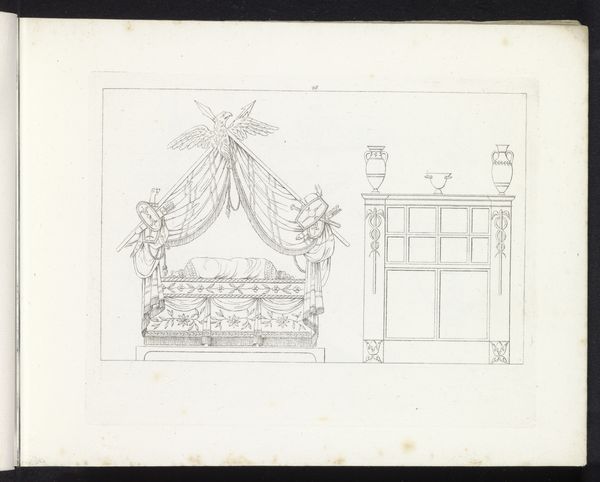
drawing, paper, ink
#
drawing
#
neoclacissism
#
paper
#
ink
#
geometric
#
history-painting
#
decorative-art
Dimensions: height 164 mm, width 215 mm
Copyright: Rijks Museum: Open Domain
Pietro Ruga's rendering of ornamental borders and mantle-pieces presents us with symbols steeped in classical revival. Here, the recurring motif of the anthemion—a stylized honeysuckle flower— speaks to themes of immortality and regeneration, its roots tracing back to ancient Greek architecture and funerary art. Observe how Ruga deploys this motif across the frieze and mantel, echoing its presence in countless Neoclassical designs. The anthemion, however, is not confined to the West; it appears in ancient Egyptian and Near Eastern art, often adorning sacred objects and royal emblems. This visual echo across cultures and epochs suggests a deep-seated human fascination with the cyclical nature of life and death, a fascination that transcends time. In our collective subconscious, the anthemion resonates as a symbol of hope and renewal, a visual embodiment of the human spirit's enduring quest for beauty and meaning. It reminds us that artistic symbols are not static but rather dynamic entities that evolve, adapt, and resurface, carrying with them the weight of history and the promise of rebirth.
Comments
No comments
Be the first to comment and join the conversation on the ultimate creative platform.
